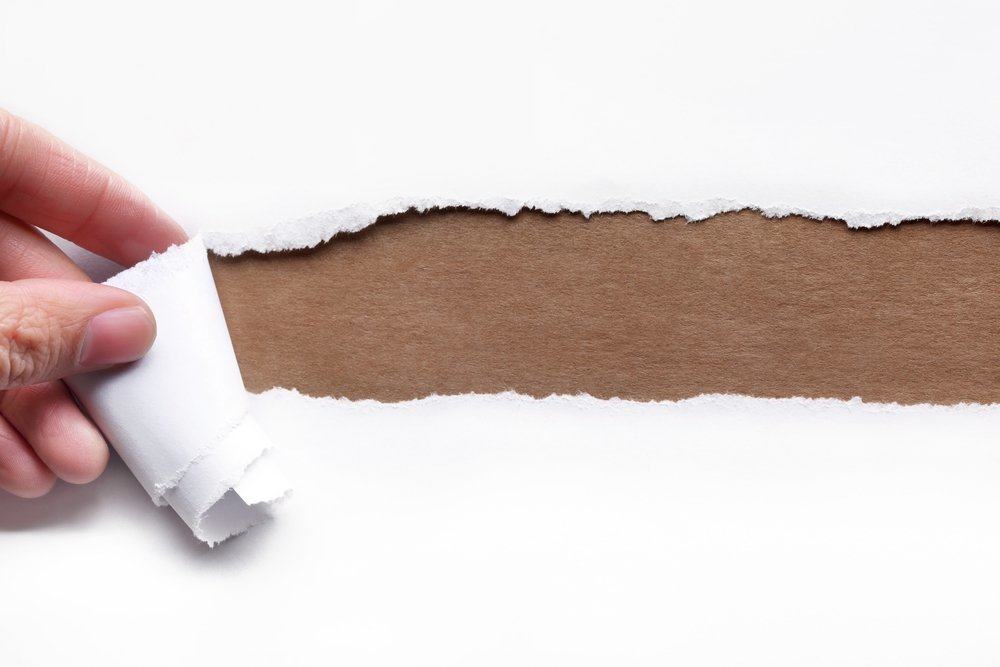Contents:
Medical Video: Episiotomy
When giving birth, the vagina will stretch to allow the baby to escape. Usually, the vagina will be able to "stretch" without problems, but not infrequently a tear will occur; from small incisions and superficial abrasions to large enough tears and affect some pelvic floor muscles.
Will vaginal tears always occur? Will tear of the vagina be harmful to your body? Get the facts about vaginal tears, so you will know what to expect before labor later.
What causes the vagina to tear during labor?
A torn vagina is a spontaneous tear (the doctor does not require incision, such as an episiotomy) which is considered a natural part of birth. Vaginal tear injuries are experienced by almost 90 percent of women giving birth - especially in their first normal labor.
During the second stage of labor, the baby's head - or any body part of the baby that will come out first - will be pushed into the vagina and move toward the perineum (the area between the vagina and anus). The perineal skin will stretch and thin on your baby's head. While the top of the baby's head begins to appear to the surface, the vaginal opening and lips begin to bulge and stretch around the baby's head. If the perineal skin does not stretch successfully, a tear can occur.
It is very rare for a woman to know or be able to feel anything from a vaginal tear that occurs, because the intensity and pressure experienced during this stage of labor defeats the sensation outside. Often the mother will be told that they have minor blisters or small tears and feel surprised because they know they don't feel anything. However, perineal and vaginal tears can sometimes cause pain afterwards and extend your recovery time.
Get to know the types of vaginal tears
There are four degrees of depth in the vaginal tear, from small incisions to deep tears that affect several pelvic muscles to the anal canal.
- First-degree tear, involves tears in the skin of the upper (epidermis) perineum and the tissue around the vaginal opening or the outer layer of the vagina itself. This tear does not affect the muscles. First-degree tear is very shallow and small, so it only requires a little - or not at all - stitches. Tearing sores usually heal quickly, causing little or no discomfort while on the move.
- Second degree tear, involves a deeper tear; affects the muscles under the vaginal lining and vaginal walls. This type of tear requires more stitches, layer by layer. Second degree injuries cause discomfort and usually resolve within a few weeks. The sewing thread will dissolve during the healing period.
- Third degree tear, affect so deeply; enter the vaginal lining deeper and the ring muscle fibers of the anal canal. The doctor will need to sew each layer separately with special focus to cover the supporting muscle layer of the anal canal.
- Fourth degree tear, including all types of nicks above and extending to the inner wall lining the rectum. This kind of vaginal tear requires a very detailed repair procedure, involving the closure of several layers. About 4 percent of women who give birth normally end up with more serious tears in their perineum which extend to or through the rectum. This kind of tear can cause pain for months and increase the risk of intestinal incontinence (the inability to control bowel movements, causing stool to leak from the rectum at unexpected times).
Nearly 99 percent of cases of vaginal tears during labor are superficial incisions (first and second degrees). More severe cases of vaginal tears, including rare ones, only occur in about 1% of births, usually as a result of an episiotomy. The vagina is torn three and four degrees more likely to occur when the baby's shoulder is caught or when a vacuum or forceps is used during childbirth.
Tearing sores can also occur elsewhere. Some women experience tears in the upper part of the vagina, near the urethra (known as urethral lacerations). Tearing in this area is often quite shallow, and if you experience it, you may only need one or two stitches or not at all. A tear near the urethra does not involve muscles, so the wound usually heals faster and is less painful than tears in the perineum. The main complaint that is often reported is a sensation of heat when urinating.
More rarely, a woman experiences a tear in the uterus or labia (the outer lip of the vagina), or a very deep tear penetrates her vaginal tissue (known as tear sulcus).
Who is at risk of having a torn vagina?
In addition to new prospective mothers who undergo their first normal labor, the risk of a torn vagina can also occur if:
- You have had a normal delivery before and have a third or fourth degree tear wound
- You undergo assisted labor, especially if it involves forceps
- You have an episiotomy, or have had it in a previous birth
- Big baby body (high birth weight)
- The birth process is long; You have been pushing very long
- You experience a substantial increase in body weight during labor
- Your baby's position is born posterior (the baby's head is down, but facing the abdomen is not your back)
- The distance between your vaginal opening and your anus is shorter than normal
- The process of giving birth is too fast (does not give the perineum time to stretch properly)
What will the doctor do to repair a torn vagina?
If you have a tear (from an episiotomy, or both) that requires stitching, the doctor will first inject a local anesthetic directly around the problem area. Or, if you have a large tear, you might get a pudendal block (injection of local anesthetic into the vaginal wall, targeting the pudendal nerve to make your entire genital area numb). Then the doctor will sew the wound, layer by layer.
Tearing sores can heal in seven to 10 days with proper treatment. However, after the tear has been repaired, you may experience pain and pain in the area of the wound as you recover.
How to treat a sewing wound torn vagina?
Uncomfortable sensation (especially when sitting firmly), bleeding from the suture site, and general swelling occur following the birthing procedure and / or stitching of the vaginal tear for 7-10 days. Defecate or do something that causes an increase in pressure to the bottom, such as coughing or sneezing, it will also hurt. In the second week, the suture wound will heal well and the sutures will dissolve, but the nerves and the return of muscle strength as usual can require a longer recovery time.
With your doctor's permission, there are ways you can relieve this discomfort at home and speed up the healing process, by:
1. Compress ice
Paste the ice cube compress (covered with a clean cloth) into the suture area for 10-20 minutes to reduce swelling. Be sure not to compress more than 20 minutes in one session, because it can cause nerve damage. Clean cloth serves to protect the skin from tissue damage due to direct exposure to cold temperatures from ice cubes.
2. Soak warm water
Sitting relaxed in a bathtub filled with warm water for 20 minutes 3 times a day, or attaching a washcloth soaked in warm water to the stitching area is a good way to relieve the discomfort caused by vaginal tear injuries.
3. Cover the pillow when sitting
Donut shaped pillows that are sold specifically to manage hemorrhoids can give you a little comfort, even if it's temporary, when you need to sit for a long time.
4. Kegel Gymnastics
If you regularly do Kegel during pregnancy, then continue now to try to relieve post-traumatic pain - even if you don't feel anything while doing it. Kegel exercises will stimulate blood circulation and help speed up your recovery process. Gymnastics is good for tightening muscles and decreasing the risk of incontinence, as well as increasing sexual pleasure.
5. Rest, don't be forced to work hard
Do not do any activity that is physically burdensome or muscle tension for at least two weeks after giving birth. Sleep lying on your side, and try not to stand or sit for too long to avoid getting worse with your perineum.
If you have a household assistant, family member, or friend offering to help ease your work, just accept it, and limit your time to tiring physical activity.
If you have more than one small incision in your vagina, chances are you will feel very uncomfortable - so don't be shy about asking for painkillers. Don't forget to keep your genital area moist but clean every time after giving birth.
What can be done to prevent a vaginal tear during childbirth?
The risk of a torn vagina will be minimized if you go through a slow, systematic and controlled delivery process to allow for a lot of time your perineum stretches well to accommodate your baby. This can mean waiting and resisting the urge to push for a while when the baby's head starts to appear, for example. When you feel the urge to push, your uterus has actually contracted and pushed the baby down. You don't need to push with your whole body while holding your breath to give birth to your baby. Holding your breath when straining reduces the oxygen supply for you and your baby, and stretches your muscles instead of relaxing. Dispose of deep breath when contracting allows your baby to go down slowly and cause a little trauma to your pelvic floor.
In one study, the use of warm compresses on the perineum during the final part of the second stage of labor (pushing) was associated with a lower risk for tears.
You or your partner can start to massage the perineum with fingers and lubricating jelly, such as K-Y Jelly, when you are around 34 weeks pregnant. After that, it must be done every day. This action will soften and smooth the skin and can help to stretch more easily during labor. Kegel exercises can also be used to help reduce the risk of a torn vagina.
Managing a healthy diet throughout pregnancy is important, not just to provide healthy food for your baby, but good nutrition and vitamins can also help keep your skin healthy and elastic; thus preventing tearing.
Finally, look for a surgeon who does not routinely conduct episiotomy and is experienced to help women give birth with a complete perineum. But remember that many things can happen outside of your power. Maybe the risk of a torn vagina is unavoidable, especially if your baby has a large body or in a difficult position, or especially if you have a particularly fragile vaginal support network.
READ ALSO:
- Strengths and Weaknesses at Home
- Can Cold Pressed Juice Make Slim in a Moment?
- Can Lemon Really Lose Weight?












